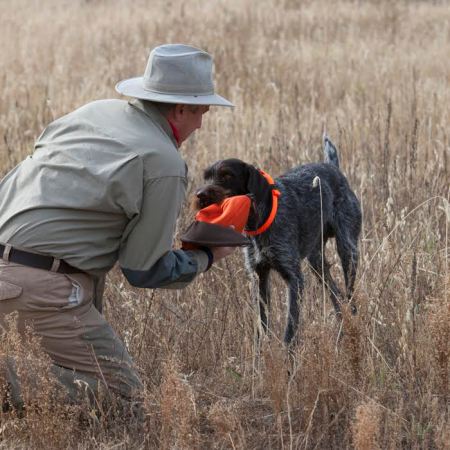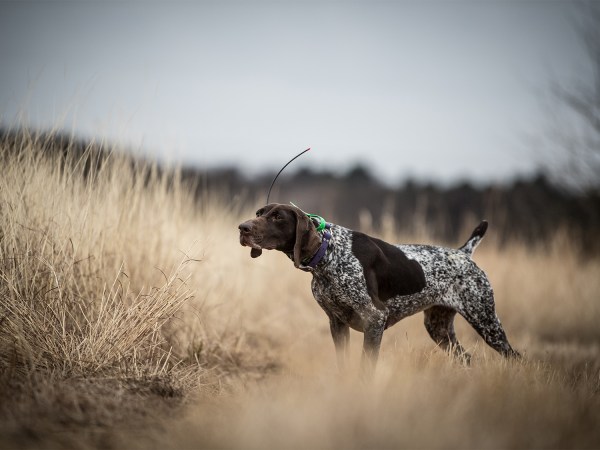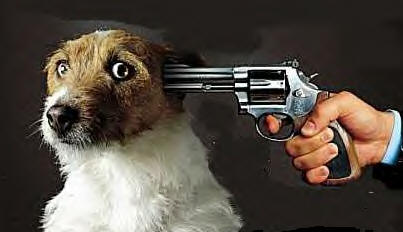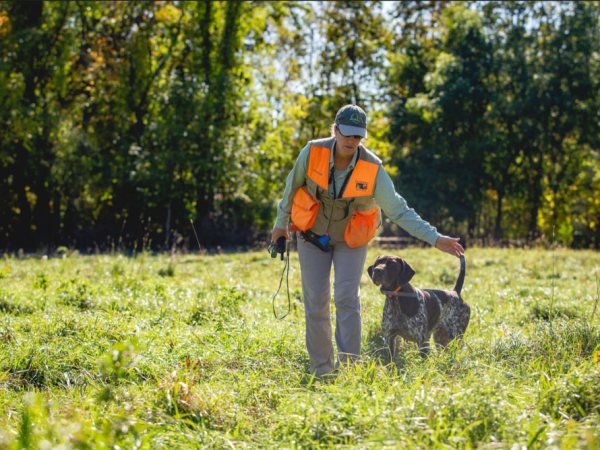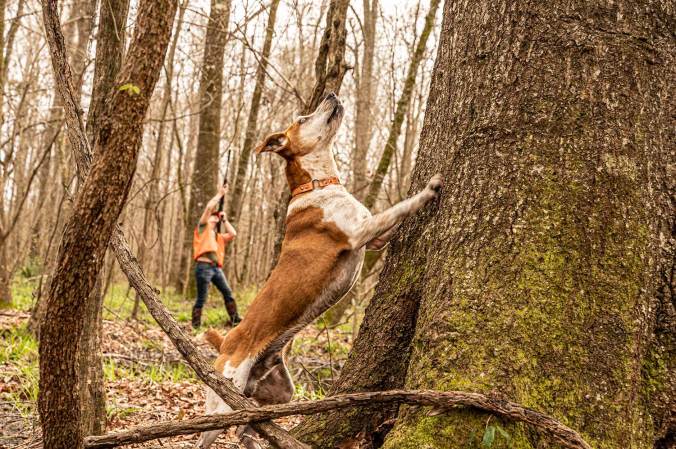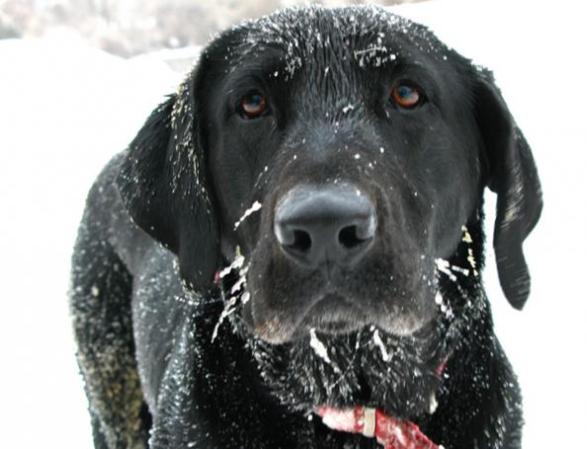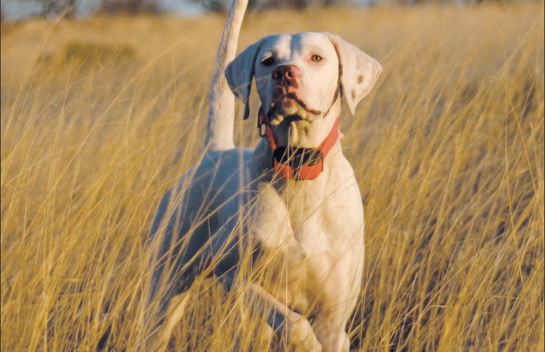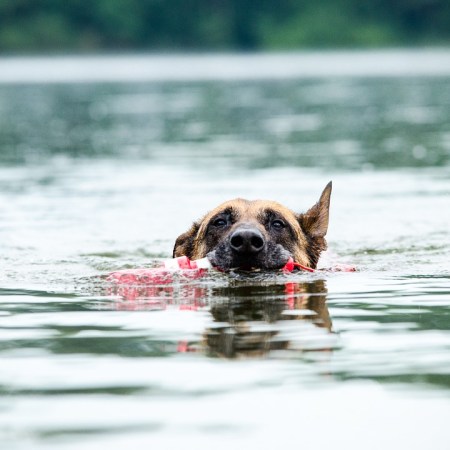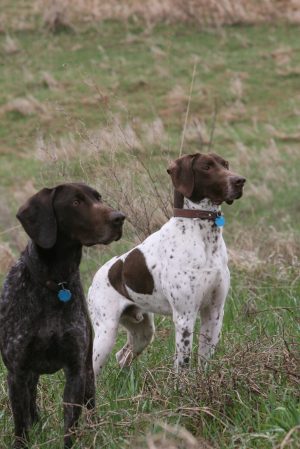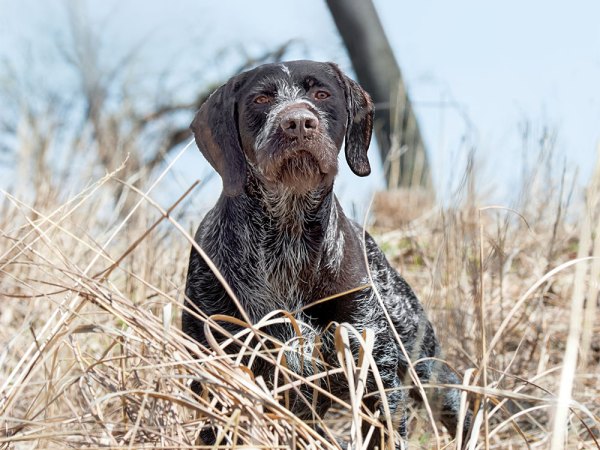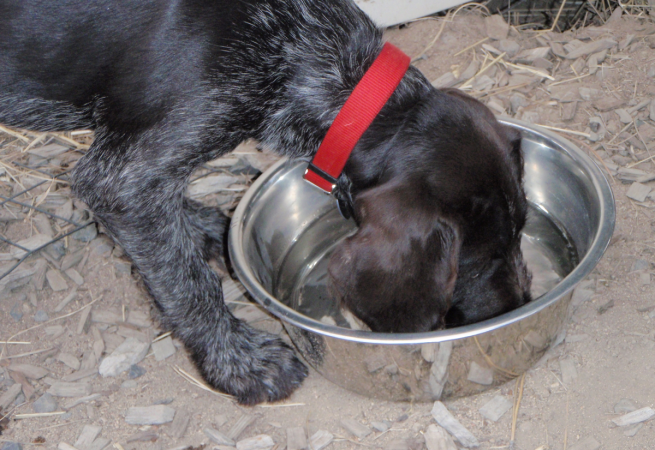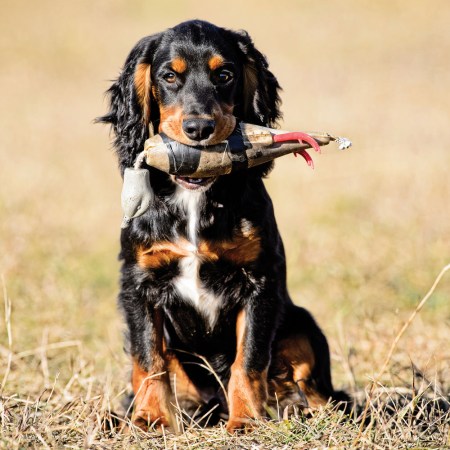When the mecury is stretched up the thermometer, that means bird season isn’t all that far off. Some kicking off Sept. 1 and others a few weeks later, and that means it’s time for your dog to begin a conditioning program.
According to bird-dog trainer George Hickox, who also does extensive canine work police units and the military, it takes six weeks to get a dog in to shape.
“If a dog isn’t obese, it will take six weeks or so to get them in shape. Dogs respond very quickly to conditioning, much better than we do. On the flip side, they atrophy faster, too, and most dogs are not in shape when the season starts,” he said.
“What makes a dog so effective at finding birds is that he can follow scent while he’s breathing both in and out,” continued Hickox. “If he’s in shape, he can work more efficiently and find birds better. If he’s out of shape, he’s going to concentrate on breathing more.”
To start conditioning, Hickox recommends going with a two-on, one-off program and cites a combination of aerobic and resistance training. “A conditioning program that has them working two days and resting for a day is ideal; that’s a good way to get a dog in shape,” he said. “And that one day off should be a full day of rest to recover and recoup.”
Using a Four-Wheeler
For aerobic endurance, Hickcox stresses that a slow pace and longer workout are better than sprinting for shorter distances. He also said that to optimally condition your dog, you need to incorporate resistance training – the equivalent of weightlifting for humans. He does both simultaneously by attaching a dog to a bar on a four-wheeler and driving it just fast enough that the dog is working aerobically, but also pulling against the drag and weight of the vehicle.
“We harness our dogs and use roading bars on a four-wheeler and go 6- to 8-mph. The dog is pulling hard and getting both aerobic and resistance training done at the same time,” he said. “It’s better to go farther than faster; increase the distance before increasing the speed.”
At 6- to 8-mph, Hickox said the dog is working at a fast trot, and that you should begin by working in 15- to 20-minute sessions. “Eventually you’ll want to get the dog up to an hour, but don’t start there – 10 minutes won’t do much, so start around 15 to 20 minutes; if you can get it up to 30 minutes, that’s great,” he said. “I don’t know a better way to get a dog in shape. Once the dog is in shape, you can maintain it with workouts three days a week – but that interval won’t get them into shape, though.”
The attached video was shot by Randy Schultz, who writes a blog called “A Bird Hunter’s Thoughts,” and who is a member of a cool little Facebook page I joined named “Bird Dogs and Fly Fishing.”
The Backyard Gym
For someone without a four-wheeler or other ATV, Hickox recommends taking a page from the military and using more resistance training by adding weight for the dog to pull. He has recommendations for both:
First, you hit a welding store and get a 7-foot chunk of what’s called “welder’s cable” – it’s about an inch in diameter. Attach an eye-bolt and swivel snap to it with epoxy. You can then add that weight to a dog’s roading harness. “Attach it to the roading harness’ O-ring on the side, not to the dog’s collar on his neck – that will cause disk issues,” he said, adding that with the added weight, you can go for a bike ride or other workout that keeps the dog moving.
The second recommendation is for those of us stuck in cities or suburbs where miles of open territory to workout might become an issue. Hickox said to attach tires to the dog’s harness for weight resistance. “If you tie a tire to the roading harness and throw bumpers in the backyard, your dog will have to dig in and he’ll be working muscle development and aerobically,” he said. “Start with a small tire and work your way up. This is something you can do in your backyard to get your dog in shape.”
Safety Measures
Hickox also cautioned to use commonsense and to monitor your dog’s condition when working. Give them breaks if needed and provide water. He suggested carrying a thermometer and checking the dog’s body temperature – when it hits that 103-degree mark, stop and take a break until it comes back down.
“Make sure the dog is fully hydrated before starting a session,” he said. “There’s no advantage to try and get the dog in shape in a week – ease in to it and gradually increase the time and take plenty of breaks.
“Learn to use a thermometer and carry one with you,” he continued. “A thermometer is fail-safe, there is no guessing. Some dogs will push through the workout and not show symptoms, and if that happens, you’ll have a dead dog on your hands.”


